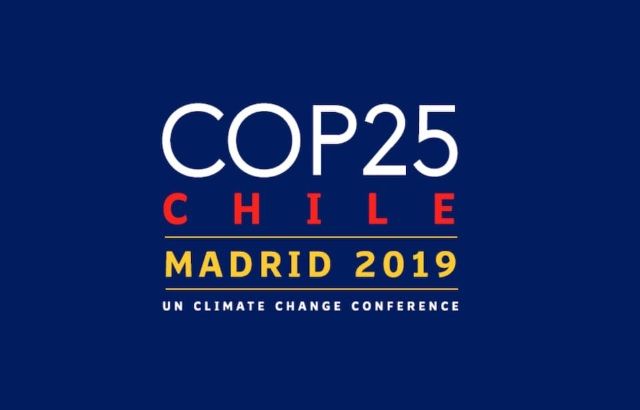UN climate negotiations on a global carbon trading market, seen as crucial to achieve the Paris Agreement, ended without a deal on Sunday.
Gilles Dufrasne, policy officer at non-profit organisation Carbon Market Watch, commented: “Currently, carbon markets risk creating massive loopholes to reach climate targets on paper without actually reducing emissions, it’s cheating.”
The negotiations are slated to continue at COP26 in the UK next year.
Carbon Market Watch explained that one of the key points stalling the negotiations is about carry-over rules for carbon credits from a previous system, established under the Kyoto Protocol, which would increase the amount of carbon credits in the market.
“Several countries such as Brazil and Australia were promoting measures which would have allowed them to use old carbon credits to meet their new climate targets.
“Furthermore, Brazil continued to promote accounting loopholes which would allow countries to double-count their emission reductions,” the NGO said.
Robust rules crucial
The carbon credit rules are part of Article 6 of the Paris Agreement, which establishes two carbon market mechanisms for signatories to voluntarily co-operate when implementing their nationally determined contributions (NDCs) and allow for greater ambition to reach them.
The World Bank suggests, in a 2016 report on carbon pricing, that the cost of meeting current NDCs could, in principal, be cut by as much as 50% if a “fully global, friction-free carbon market” was implemented.
A spokesperson of the International Emissions Trading Association (Ieta), a non-profit business organisation, told Expert Investor: “Essentially, Ieta believes that well-founded, ambitious markets with robust rules on accounting and transparency will generate real, verifiable and sustainable reductions in emissions.”
Ilona Millar, global head of climate change at law firm Baker McKenzie, agreed that robust and transparent accounting systems without double counting are critical for the design of the new market and its environmental integrity.
“The ability to deliver increased ambition and achieve net zero by 2050 will require the use of cooperative mechanisms, including carbon markets, to significantly scale up public and private sector finance for mitigation,” she said.
Millar expects that “there will be a real effort by the incoming COP26 presidency to seek to resolve the outstanding issues related to Article 6 in 2020” and, if there is any chance for an agreement, it would need “creative bridging proposals”.
National emissions trading systems
In its 2019 report, the World Bank Group counted a total of 57 carbon pricing initiatives that have been implemented, or are scheduled for implementation, including 28 emissions trading systems (ETSs).
It has observed an increase of prices in many ETSs, which it believes reflects “strengthened trust” in them.
The European Emissions Allowances price continued to grow from €13 per tonne of carbon dioxide equivalent (tCO2e) to €21/tCO2e, as more certainty developed on the future of the European Union Emissions Trading System (EU ETS) after 2020, the report said.
Yet, it calls for swift action as “only 20% of global greenhouse gas emissions are covered by a carbon price and less than 5% of those are currently priced at levels consistent with reaching the temperature goals of the Paris Agreement”.
The Ieta spokesperson noted: “What we do believe is that nations can, and will, continue to set up emissions trading systems, and link them to each other using the principles that are encompassed in Article 6.2 of the Paris Agreement.”
Dirk Forrister, president and chief executive of Ieta, confirmed the trend.
He explained that China “[has] an ETS fully designed and ready to roll or Mexico that’s got legislation passed, regulations issued, ready to move into a pilot phase; Columbia is in a similar posture of working on emissions trading design that they would like to implement. Chile has also got an intention to morph toward an emissions trading programme”.
Millar explained that countries are already beginning to pilot cooperative approaches under Article 6.
She expects “more activity in this space, notwithstanding the absence of a formal decision on Article 6.2”, as countries supporting carbon markets will take early action “to demonstrate the merits of international cooperation” and develop and test the market architecture.
Hot air credits
Observers say that how the rules will be finalised going forward will decide the effectiveness of the Paris Agreement itself.
Carbon Market Watch cautions that key to functioning carbon markets is for countries to set strong climate targets.
“If countries have weak climate targets which they can easily overachieve, and if Article 6 allows these countries to sell this so-called ‘extra-abatement’, then this would generate ‘hot air’ credits.
“If these credits were then used to justify emissions somewhere else, this would increase overall emissions because the credits do not actually correspond to real emission reductions,” it continued.
Dufrasne warns: “We cannot afford to set up new systems which will repeat mistakes from the past and create billions of tonnes of hot air credits which have no value for the climate and are used by rich countries to escape their climate responsibilities.”

Source: World Bank Group, State and Trends of Carbon Pricing 2019







